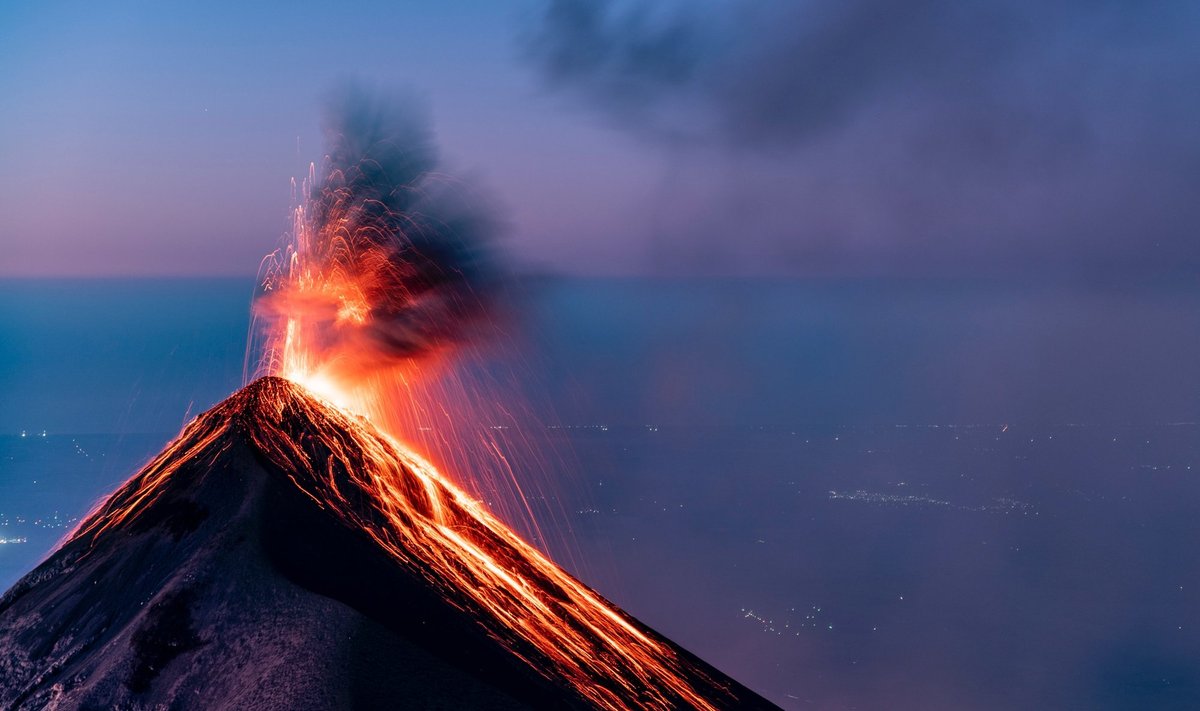The Phlegrean Fields – a large volcanic region of Italy, on the territory of which almost half a million people live – is actively preparing for an eruption. At least that’s what the new study says.
According to study co-author Stefano Carlino, the supervolcano Campi Flegrei (Phlegraean Fields), located near Naples, is in an “extremely dangerous” state. The last time the volcano erupted was in 1538, but now the risk of its eruption is higher than ever. Local authorities have already developed an evacuation plan, and the risk level is reviewed monthly.
Are the Phlegraean fields dangerous?
Sites near Naples in Italy may be better known for Vesuvius, which destroyed the city of Pompeii in AD 69, but the Phlegrean Fields present a more pressing issue.
Campi Flegrei occupies a vast area with a gentle depression about 12-14 km long, and 500,000 people live in its red zone, designated by the Italian Department of Civil Defense (Dipartimento della Protezione Civile) as the highest risk zone. Another 800,000 residents live in the yellow zone.
It is believed that the eruption of the Phlegrean fields, which occurred 40 thousand years ago, was one of the reasons for the “volcanic winter” and the extinction of the Neanderthals.
In 1538, the volcano erupted for eight days, ejecting enough lava, rocks, and clouds of ash to form a new mountain. In the 1980s, there was another surge in activity that led to the evacuation of 40,000 residents of nearby areas. Since then, the supervolcano has been relatively calm.
However, now a study by scientists from University College London (UCL) and the National Institute of Geophysics and Volcanology (INGV) in Italy has shown that another awakening is almost inevitable.
“We’re not saying that an eruption will happen, we’re saying conditions for an eruption have become more favorable,” lead author Christopher Kilburn of the University of California told AFP.
One reason is that tens of thousands of small earthquakes since the 1950s have weakened the depression at the top of the volcano, known as the caldera.
Will the Phlegrean Fields erupt?
In a study published in early June in the journal Nature, scientists reported that “parts of the volcano have been stretched almost to the limit.”
Since 2019, the number of small shocks has been growing, putting pressure on the volcano’s crust. In April, 600 such fluctuations were recorded. The ground level in the vicinity also rose. The seaside town of Pozzuoli has risen nearly four meters since the 1950s, the report says.
Earthquakes and uplift are cumulative, so an eruption may not be preceded by a significant increase in activity.
“Perhaps the eruption will be preceded by relatively weak signals, such as lower ground uplift and fewer earthquakes,” the authors of the study said.
They also stated that a large eruption was unlikely, but a series of smaller eruptions could occur.
In addition, “for an eruption to occur, the magma must be pushed up in the right place,” Kilburn explained.
What happens if Campi Phlegrei erupts?
In the event of an eruption, local authorities have developed an evacuation plan. It provides that residents will be taken out of the area by personal or public transport within three days. The risk levels – green, yellow, orange, and red – are reviewed monthly.
“Currently, the alert level in Pozzuoli is yellow,” council spokesman Jordana Mobilio told AFP. Residents also regularly receive text alerts for earthquakes of magnitude 1.5 or higher on the Richter scale.
Phlegraean fields – in ancient Greek mythology, a volcanic region where gigantomachy took place – the battle of the gods, led by Zeus, who was assisted by Hercules, with the giants.

